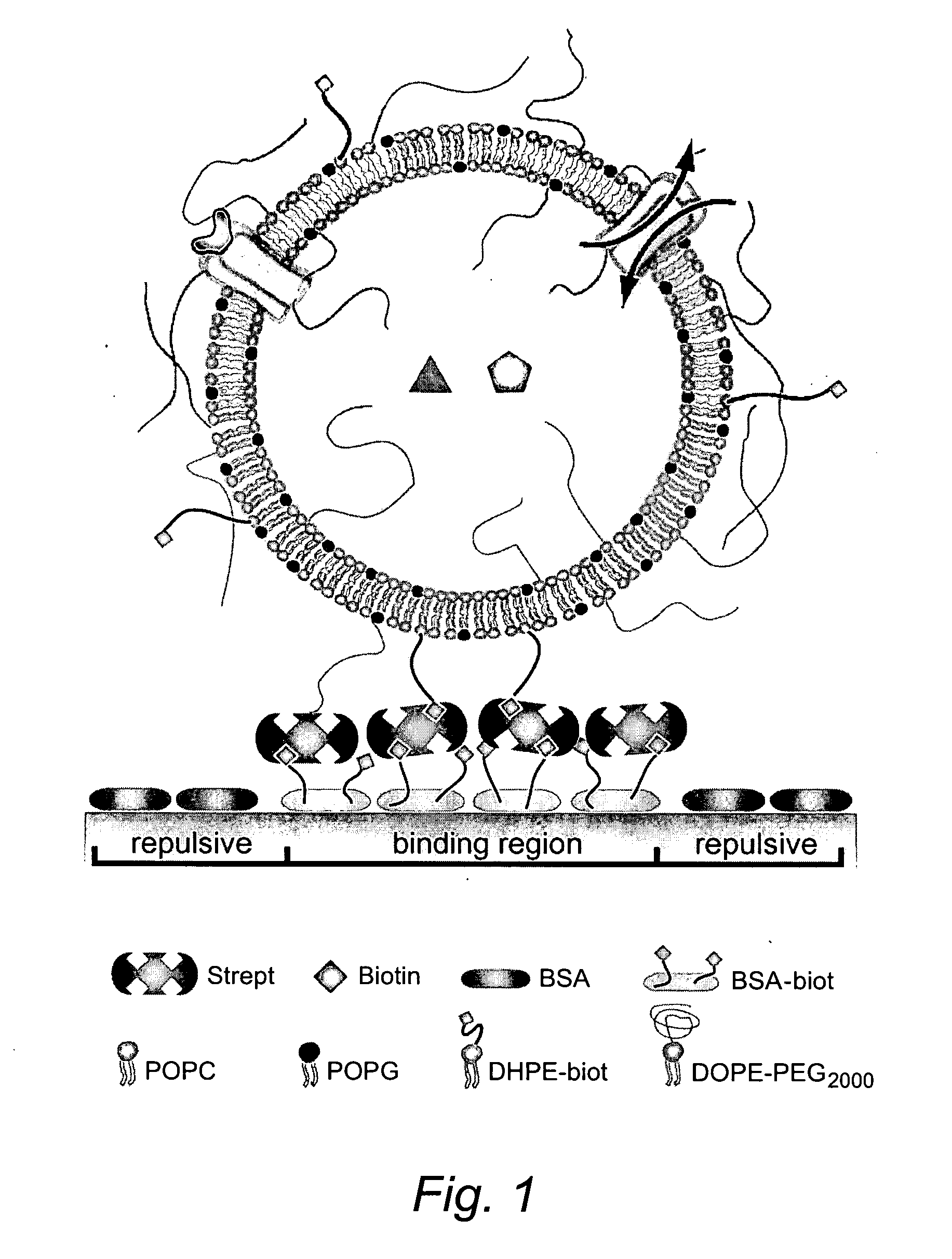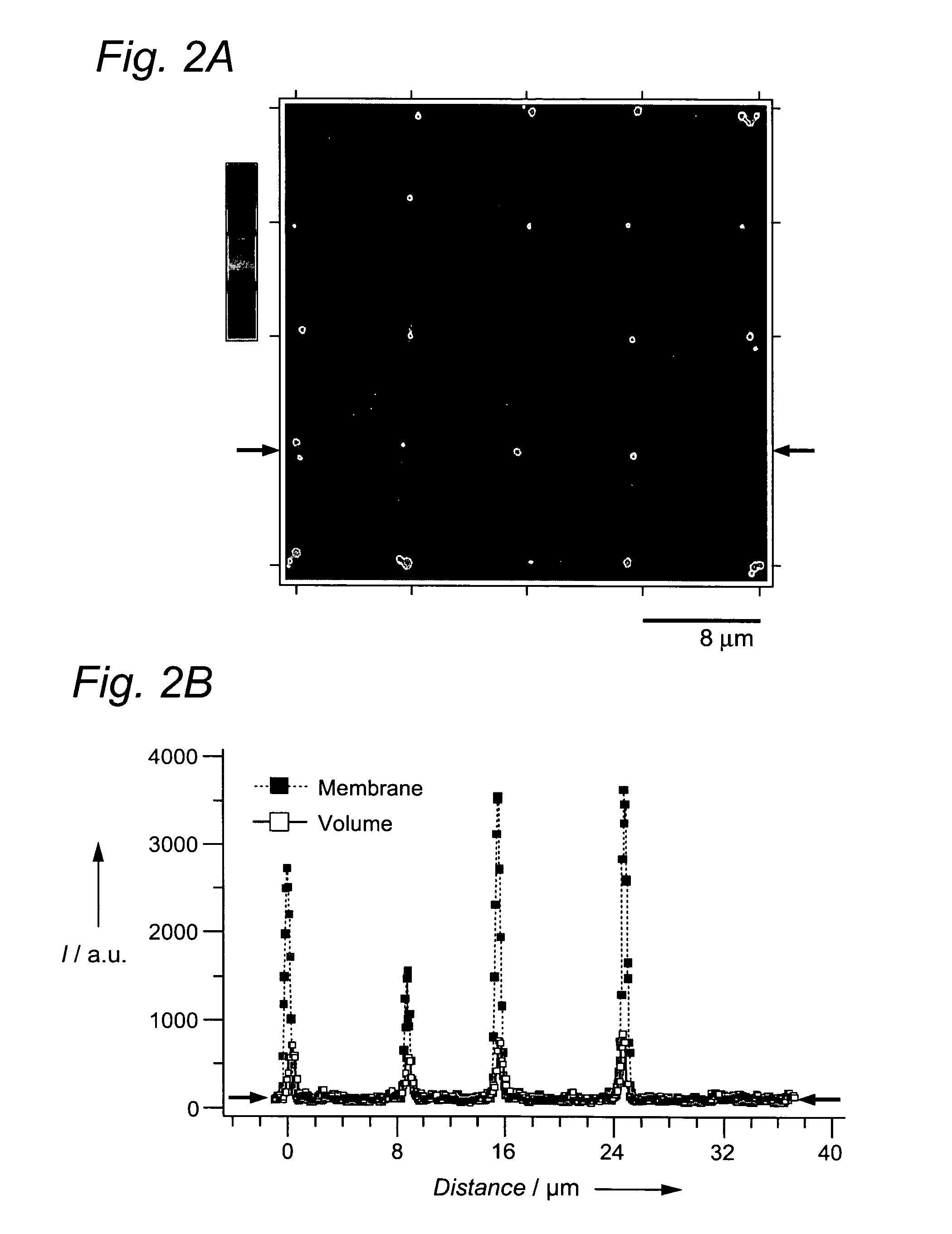Self-assembled arrays of lipid-bilayer vesicles
a lipid-bilayer, self-assembling technology, applied in the direction of peptides, organic chemistry, biomass after-treatment, etc., can solve the problems of not being able to self-assemble not being able to teach or suggest self-assembly of the vesicle on the surface to produce an array,
- Summary
- Abstract
- Description
- Claims
- Application Information
AI Technical Summary
Benefits of technology
Problems solved by technology
Method used
Image
Examples
Embodiment Construction
[0033] By using lipid-bilayer vesicles[1] as molecular shuttles[7], we transported and localized (bio)molecules encapsulated in their aqueous interior or embedded in the lipid matrix. The site-selective immobilization of intact single vesicles (SVs) was mediated by patterns of receptor molecules defined by microcontact printing (μCP)[8] on glass. One-step directed self-assembly (SA)[9] produced arrays of about 106 volume-elements per mm2 within minutes. As illustrated, this approach can additionally create random arrays of vesicles cof varied content that may serve as libraries of miniaturized (bio)chemical reaction systems.
[0034] The strategy employed to construct arrays of surface-immobilized SVs is illustrated in FIG. 1. Similar concepts have been recently applied to the patterned immobilization of colloids[1] or vesicles[11]. We defined regions on the surface that specifically bind vesicles and are surrounded by areas that prevent nonspecific attachment. Specific binding is med...
PUM
| Property | Measurement | Unit |
|---|---|---|
| center-to-center distance | aaaaa | aaaaa |
| diameter | aaaaa | aaaaa |
| mol % | aaaaa | aaaaa |
Abstract
Description
Claims
Application Information
 Login to View More
Login to View More - R&D
- Intellectual Property
- Life Sciences
- Materials
- Tech Scout
- Unparalleled Data Quality
- Higher Quality Content
- 60% Fewer Hallucinations
Browse by: Latest US Patents, China's latest patents, Technical Efficacy Thesaurus, Application Domain, Technology Topic, Popular Technical Reports.
© 2025 PatSnap. All rights reserved.Legal|Privacy policy|Modern Slavery Act Transparency Statement|Sitemap|About US| Contact US: help@patsnap.com



